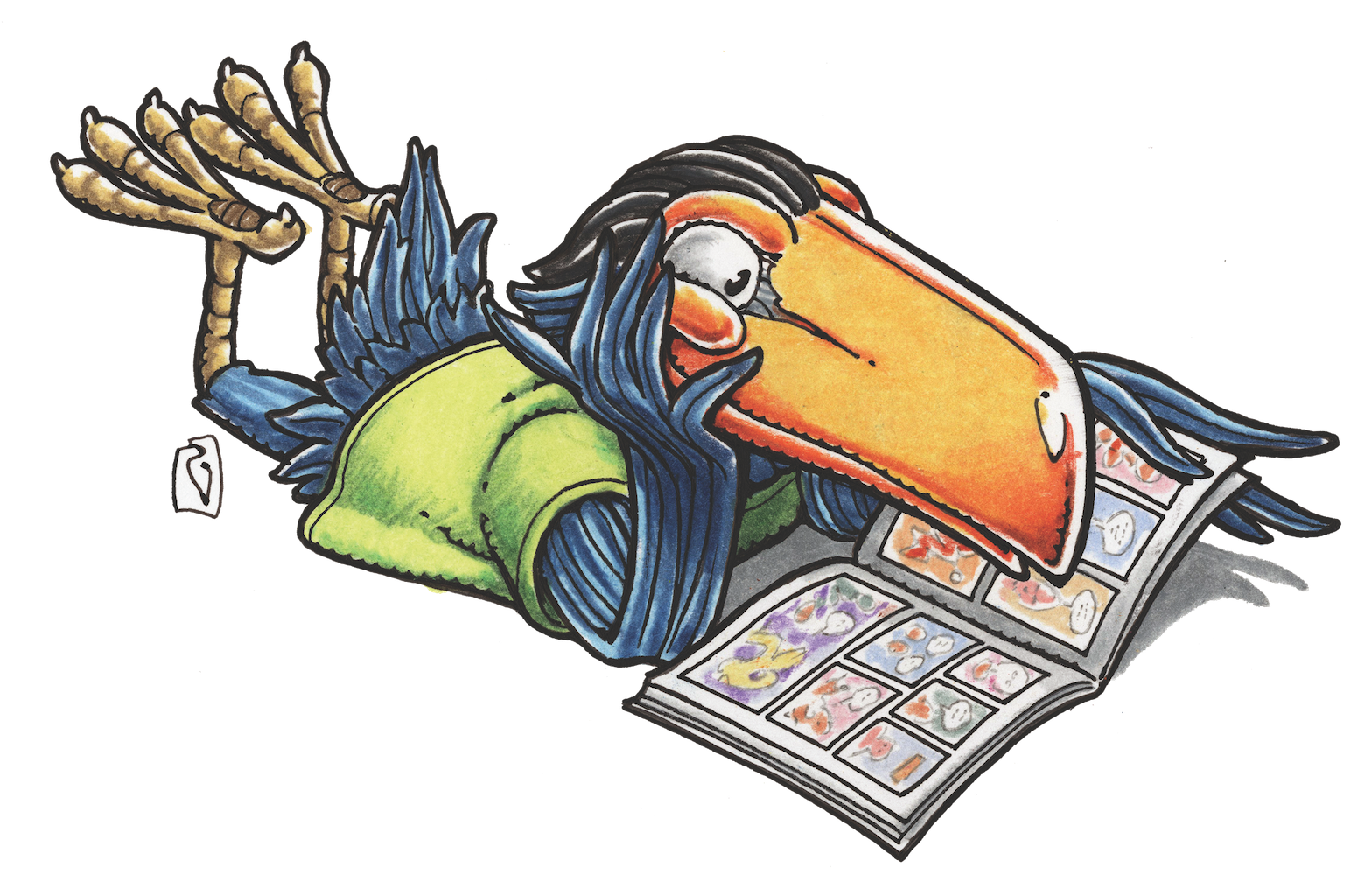STEVE LIEBER’S DILETTANTE
Dilettante 035: Holiday Gift Suggestions for Comics People


The holidays are barreling down on us, and I’ll bet you’re as terrified as I am. You don’t know what to get the comics people in your life. Or maybe you’re a comics person and your loved ones have no idea what to get for you. I’m here to help. Here’s a list of a bunch of great stuff for any comics maker or aficionado. No links, but you folks know how to Google!
Art Supplies
Strathmore 500 series Bristol Board
Every comics artist needs bristol board—it’s the sturdy paper preferred by most comics artists in the West. Strathmore 500 series bristol paper is top-of-the-line stuff and feels luxurious to draw on. It’s high-quality paper that takes ink beautifully, and stands up to lots of erasing without getting gnarly the way cheaper papers do. It comes in two surfaces: Plate Finish (also known as Hot Press), which is very smooth to the touch, and Vellum Finish (aka Cold Press), which is rougher. Most artists have a strong preference for one or the other, so take a look at which kind of finish the paper they’re already using has and go with that. If you can bring a sample with you to an art supply store, even better.
Palomino Blackwing Pencils
Artists love these pencils for the smooth, matte finish of their graphite, and the extra wide erasers on the end. Get a box of 12 and pair it with the two-step Blackwing Longpoint Sharpener.
Artograph LED Lightpad or Copic LED Lightbox
Lightboxes are tremendously useful for comics artists. We use them to quickly trace a rough sketch onto a new sheet of paper. They used to be big, clumsy objects, built around heavy, unpleasant fluorescent bulbs, which got hot and didn’t spread their light evenly. In the past few years they’ve gotten a lot better. The new LED boxes stay cool and have a nice even light. Try to get something big enough for an entire comics page (for most artists, that’ll be 11″ by 17″). And if you think they’d want to travel with it, Artograph makes a rechargeable travel battery for the Lightpad.
3D Anatomical Sculpture
Lots of artists learn their anatomy from books, but there’s nothing like careful scrutiny of a 3D object to really understand how the body is constructed. A desktop anatomical figure from Anatomytools.com, Jun Huang, or 3dtotal.com will be both handsome and helpful. Most artists I’ve spoken to prefer the grey ones over the full-color versions, but your mileage may vary.
How To Books
Jack Hamm’s Books
Hamm has written a bunch of How To books. They’re all inexpensive and they’re all stuffed to the margins with valuable information. They’re ostensibly written for beginners and young artists, but he’s got plenty of useful information for almost any artist. Get Cartooning the Head and Figure, Drawing the Head and Figure, How to Draw Animals, or Drawing Scenery: Landscapes and Seascapes. Or better yet, get all four.
Figure Drawing: Design and Invention by Michael Hampton
Hampton’s written one of the best books on anatomy for artists I’ve ever seen. He offers a smart synthesis of ideas from earlier masters like Andrew Loomis and George Bridgman, and presents them in clear, color-coded drawings that explain exactly how the muscles and bones fit together.
Color and Light: A Guide for the Realist Painter by James Gurney
Gurney describes how light and color work and offers smart analysis that can help and artist solve a wide variety of problems in their own work, regardless of medium.
How to Draw Anime & Game Characters Series by Tadashi Ozawa
These are fine how-to books for any aspiring artist interested in manga, with plenty of clear, step- by-step processes and well-expressed examples of common errors and how to correct them. I particularly liked Vol. 3: Bringing Daily Actions to Life.
Framed Ink: Drawing and Composition for Visual Storytellers by Marcos Mateu-Mestre
One of the finest books about composition for visual storytellers I’ve ever seen.
Software
Manga Studio 5 or 5EX
This is quickly becoming the most popular digital drawing software for professional cartoonists. It’s inexpensive, easy to learn, and designed specifically for making comics. I know many cartoonists who, though usually hesitant to try new software, latched onto Manga Studio and immediately incorporated it into their workflow. I’ve used it daily for a couple of years myself, and tools like the “perspective ruler” still feel like magic to me.
Comics and Graphic Novels
Dennis the Menace #1: The Classic Comicbooks
I can never heap enough praise on Owen Fitzgerald’s and Al Wiseman’s art in the old Dennis the Menace comic book series. Now Papercutz is reprinting them in big affordable books!
Supermutant Magic Academy by Jillian Tamaki
A thick book of funny, insightful, and irreverent comic strips that use the tropes of superhero and Harry Potter stories to tell the truth about adolescence.
The Realist by Asaf Hanuka
A gorgeous collection of Hanuka’s weekly comic strip, an unsparing, expressionist, internal autobiography.
E.C. Segar’s Popeye
Fantagraphics has reprinted E.C. Segar’s complete run of Thimble Theater featuring Popeye as an eight-volume series. If you think you know Popeye from the cartoons, you don’t know Popeye. Someone you love deserves one of these beautifully designed hardcovers.
Original Art
Maybe you’re worried that your recipient already has whatever you were planning to give? You can’t go wrong giving original comics art. Every piece is one of a kind! You’re guaranteed they don’t have it.
You can hunt around on eBay or comicartfans.com for work by someone’s favorite artist or featuring their favorite characters. There are also professional comic art dealers (Google “Original Comic Art Dealers”). And you can even go right to the source and contact artists directly!
I’ve only scratched the surface of possible gifts. Want to share your wish list, or offer up your own suggestions? Ping me on Twitter at @steve_lieber, or on Facebook at https://www.facebook.com/steve.lieber. I’d love to hear what you’re giving, or hoping to receive!
Steve Lieber’s Dilettante appears the second Tuesday of every month here on Toucan!